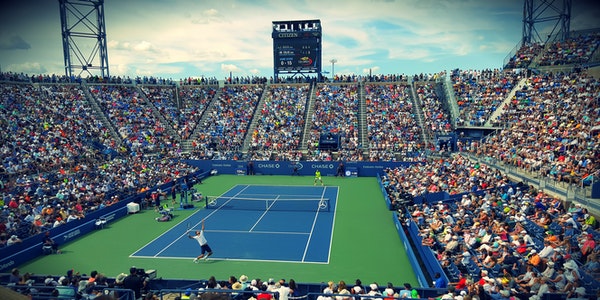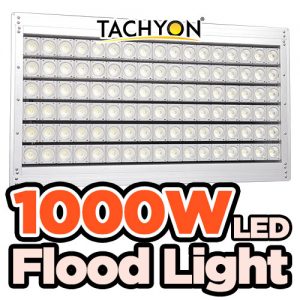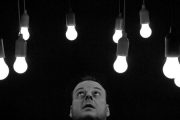Advantages of LED Lights
At present, there are many kinds of energy-saving lamps in the market, and LED energy-saving lamps are more advanced and more environmentally friendly. The data shows that led energy-saving lamps save 80% power than incandescent lamps and 50% power than fluorescent lamps. With the advantages of energy saving and environmental protection, LED lamp has become the main trend in the development of lamp industry. The obvious advantages of LED energy-saving lamps can be reflected in the following aspects:
- Low voltage power supply and low power consumption: Generally speaking, the working voltage of LED energy-saving lamp is 2 to 3.6V, and the working current is 0.02 to 0.03A,
- Small size: LED energy saving lamp is basically a very small chip encapsulated in epoxy resin,
- Long service life: under appropriate current and voltage, its service life can reach 100000 hours, almost without maintenance. In addition, the LED energy-saving lamp has a complete epoxy resin package, which is stronger than the bulb and fluorescent tube, and there is no loose part in the lamp body, so it is not easy to damage,
- High brightness and low heat: Although incandescent lamps and halogen tungsten lamps for general lighting are cheap, their luminous efficiency is low, and they consume electricity for nothing due to the thermal effect of lamps; As a kind of lighting lamp, LED lamps not only have high luminous efficiency, but also have little heat and power consumption,
- Environmental protection: LED lamps are made of non-toxic materials. Unlike fluorescent lamps, mercury can cause pollution and can be recycled,
- LED energy-saving lamp also has the characteristics of no flicker, strong applicability, high stability and short response time; Because the technology and product properties of LED are quite different from those of traditional lamps, the current safety standards for general lamps are obviously not applicable.

Safety Specification for LED Luminaires
With the improvement of technology, the use of LED lamps has changed from simple application in indicator lights and signal lights in the past decades to auxiliary lighting such as mobile phone backlight, interior lighting, brake lights, LCD TV, laptop backlight, etc; In the past two years, it has become the main lighting system, covering the fields of lighting, outdoor, commercial and home:
products Category
Architecture: Garden lamp, searchlight, ladder lamp, balcony lamp, etc
outdoors: Street lamp, column lamp, etc
business: Advertising lighting, display cabinet lighting, etc
At home: Ceiling lamp, wall lamp, kitchen cabinet lamp, standing lamp, table lamp, etc
With the improvement of LED light source manufacturing technology and the widening of application level, UL is committed to ensuring the safety of consumers. UL has formulated the safety standard ul8750 for LED modules and lighting lamps, which is used to regulate LED lamps and lanterns products, and officially released it in 2009.
This standard is a necessary safety standard for the industry to sell LED products to North America. It is applicable to all kinds of products with LED as the main light source, including lamps, bulbs, drivers, etc. in the future, in addition to safety specifications, LED light source lighting products should also verify the special properties of LED light source and module.
Classification of LED Lamps in UL Standard
According to the three basic product categories of LED lamps, LED bulbs and LED power supplies, the safety standards and relevant precautions are different when the corresponding application products are different when they are extended to finished products or parts, and the details is as below:
- LED lamps:
Application products & Safety standard precautions
*Indicator UL48
*Portable lamps, such as handlebar lamp, kitchen cabinet lamp, table lamp, standing lamp and wall lamp, are connected to the branch circuit of 120V, 15 or 20A through the plug of power cord *Christmas lights UL588
*Emergency light, exit light UL924
*Display cabinet, mirror lamp UL962
*Stage lamp UL1573
*UL1598 covers fixed lamps, such as step lamp, embedded lamp, ceiling lamp, chandelier, wall lamp, street lamp, column lamp, etc., which are used in non hazardous areas and installed on branch circuits below 600V.
*Night light UL1786
*Low voltage garden lamp UL1838
*Water pipe lamp UL238
- LED bulb:
Application products & Safety standard precautions
*Indicator bulb UL496
*LED bulb, including driving circuit, UL1993. e27 base is a European standard and cannot be used in North American market. E26 base in North America
*LED bulb with driving circuit UL496 Capacity network
*LED module, without driving circuit UL8750
- LED driver and power supply:
Application products Safety standard precautions
*When the power supply UL60950-1: outputs LPS safety circuit, the LED module and LED control module do not need electrical enclosure
*Power supply UL1012: LED module and LED control module shall be provided with appropriate electrical enclosure protection
*Power supply UL1310: output class 2 safety circuit, LED module and LED control module do not need electrical enclosure
*If the driver UL935 outputs LPS / class2 safety circuit, the LED module and LED control module do not need electrical enclosure
*Low voltage garden lamp power supply ul1838led module and LED control module shall be provided with appropriate electrical enclosure protection
LED As a new type of light source, energy saving 、 Long life, pollution-free and widely concerned by everyone. In particular, the successful application of a large number of LED technologies in the Chinese Olympic Games has achieved remarkable results. Local governments have supported the LED industry one after another and established a large number of LED demonstration units. At the same time, a large number of enterprises have also set foot in this field. Even BYD Company, which started as a battery company and became famous in automobile industry, once again put forward the slogan of No.1 led in the world.
The Boom of LED Lights
In the long history of mankind, there has never been any lighting Devices like LED are expected to be high before they are mature, but the slow development also makes LED products too conceptual and lack of customer base.
Even now, the government is trying to support the growth of led by taking LED street lamps as a breakthrough point, but the customer base of LED for both civil and commercial use is still not formed. At this time, there is a dangerous signal: LED manufacturers have taken cost reduction as the first priority!
Many companies increase the current of led to reduce the number of wicks while maintaining the same brightness In order to save cost, or reduce the area of PCB, or reduce the number of safety devices and other methods, of course, we should believe that Chinese companies have inherent advantages in cost reduction.
Not to mention the impact of this on product safety, as far as the industry cluster is concerned, LED has entered the situation of price reshuffle before there is a market, which is unfavorable to the whole industry. The entry of large capital will aggravate the decline of small and medium-sized enterprises.
This is a dangerous situation. On the one hand, the technological development of LED will be stagnant, on the other hand, cost compression or too much attention to cost cannot guarantee the final product characteristics, and will not show the advantages of LED products to a large extent.
Nowadays, in order to open the civil market, the LED industry mostly uses LED lamps It is designed to be replaceable, that is, to directly replace the existing lamps. However, in the process of lamp development, in addition to the direct replacement of incandescent lamps by compact lamps, there are few direct replacement models. For example, T8 and ceiling lamps are almost the patents of fluorescent lamps, while chandeliers are still the world of tungsten lamps. Why must led take the road of replacement?
What are the Disadvantages of the Existing Replacement Lamp Design?
Heat dissipation
It is well known that led has poor heat resistance, which will inevitably lead to the problem of wick life. The design of the existing LED lamp is often difficult to meet the requirements of heat dissipation.
In a very demanding field of heat dissipation, it uses a very poor passive heat dissipation method, and most of them are air-cooled, or even closed air-cooled. For example, some lamps need to add a plastic sleeve between the drive plate and the aluminum radiator to increase the reliability of insulation, and also need to be filled with heat dissipation silica gel to improve the heat dissipation capacity.
The T8 lamp is still closed, and the wick can only rely on air convection heat transfer to the aluminum tube on the back of the lamp for heat dissipation. Generally, the internal temperature of this kind of lamp will be 70 or 80 degrees.
And if we take into account the heat dissipation, the weight is a problem; It is difficult to guarantee the heat dissipation while considering the weight, which is a dilemma in the existing design, and there is no feasible standard.
lifespan
The lifespan of LED wick decreases exponentially with the increase of temperature; The life of electrolytic capacitor is reduced by half when the temperature increases by 10 ℃.
With the increase of MOS temperature, the internal resistance and loss will increase, and the temperature will rise again, and eventually burn out. Of course, the domestic manufacturers did not give the specific life of LED lamps.
When they publicized, they only mentioned that the life of LED wick is 100000 hours, but the bottleneck of LED life lies in the system driver board. Often, the LED wick is not damaged, and the system driver has failed.
In addition, the light decay of the LED lamp is very serious, so the life of the lamp should also consider the visual experience, that is, how long the lamp lasts.
When the brightness of the lamp is reduced to a level that is visually dark, it can be considered that when the service life is up, the customer will consider replacing the lamp. This service life is not given by the manufacturer, but it is very important.
In addition, the existing LED household lighting Most of them are limited by volume, so it is difficult to do a good job in protection. In the area with large voltage fluctuation and serious interference, the existing low-power design is a test.
The most important thing is whether the life of LED is directly proportional to the life of the company. If the LED lamps advertised for 10 years are broken in two years, and the company was shut down half a year ago, will users take this risk?
weight
Among the lamps with screw type interface, the weight of fluorescent lamp is only a few times that of LED lamps. Due to the lack of heat sink, the weight of fluorescent lamp can be ignored for the lamp holder, but the weight of LED is a very serious test for the lamp holder, especially the weight of 7.8w screw type interface led lamp is very dangerous. Which business has considered this?
efficiency
Some people may wonder that led is energy saving Product, why should we consider the issue of efficiency? I mentioned two points here, one is pf value, the other is system efficiency.
Because most of the existing LED designs are low-power, passive PFC is adopted under the pressure of cost, and the PF may be as high as 90, which is far less than the efficiency of active PFC.
It is a pressure for the country to replace the fluorescent lamp with LED, which has a very close luminous efficiency. As most of the existing designs of LED lamps are low-power, such as 4.8w, 7.2W and so on, the loss of devices accounts for a large proportion, and the isolation mode is bound to be very low.
In order to improve the efficiency, the non isolation mode should not only be well designed in terms of safety, but also the efficiency is only about 80, which is not ideal. Moreover, the existing LED manufacturers in the end led illuminance do how much, do not provide accurate values, often luminous brightness is far less than the nominal value.








